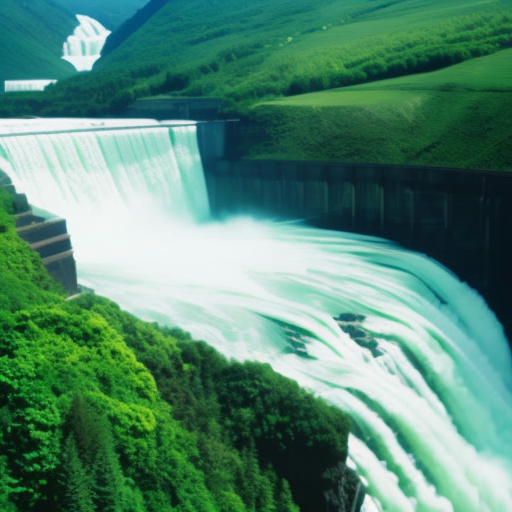Summary:
Hydropower is a renewable energy source that harnesses the power of flowing or falling water to generate electricity. It is a clean and sustainable form of energy that has been used for centuries. Hydropower plants are built near rivers, dams, or other water sources, and they convert the kinetic energy of the water into mechanical energy, which is then transformed into electrical energy.
How Hydropower Works:
Hydropower plants consist of several key components. First, a dam is constructed to create a reservoir or a water storage area. When water is released from the reservoir, it flows through a turbine, which is connected to a generator. As the water passes through the turbine, it causes the blades to spin, converting the kinetic energy of the water into mechanical energy. The generator then converts this mechanical energy into electrical energy, which can be used to power homes, businesses, and industries.
Advantages of Hydropower:
There are several advantages to using hydropower as a source of electricity. Firstly, it is a renewable energy source, meaning that it relies on the natural water cycle and is not depleted when used. Hydropower is also a clean source of energy, as it does not produce greenhouse gas emissions or air pollutants during operation. Additionally, hydropower plants can provide a reliable and consistent source of electricity, as the flow of water can be controlled to meet demand. Hydropower also offers the benefit of water storage, which can be used for irrigation, flood control, and water supply.
Types of Hydropower Plants:
There are several types of hydropower plants, each with its own unique characteristics. Conventional hydropower plants use dams to store water in reservoirs, which can be released to generate electricity. These plants are often large-scale and can provide a significant amount of power. Run-of-river hydropower plants, on the other hand, do not require a dam or reservoir. Instead, they use the natural flow of the river to generate electricity. These plants have a smaller environmental footprint but may have lower power output. Pumped storage hydropower plants are another type, which use surplus electricity during off-peak hours to pump water from a lower reservoir to an upper reservoir. When electricity demand is high, the water is released back down to the lower reservoir, passing through turbines to generate electricity.
Challenges and Future Outlook:
While hydropower has many benefits, it also faces certain challenges. The construction of large dams can have significant environmental impacts, such as altering river ecosystems and displacing communities. Additionally, the availability of suitable sites for hydropower plants is limited. However, advancements in technology are addressing these challenges. For example, fish ladders and fish-friendly turbines are being developed to mitigate the impact on fish populations. Furthermore, small-scale hydropower systems are gaining popularity, as they have a smaller environmental footprint and can be installed in a variety of locations.
The future of hydropower looks promising, as it has the potential to play a significant role in the transition to a more sustainable energy system. With ongoing research and development, hydropower technology is becoming more efficient and environmentally friendly. Furthermore, the integration of hydropower with other renewable energy sources, such as solar and wind, can help create a more reliable and resilient energy grid. As the demand for clean energy continues to grow, hydropower will likely remain a key player in the global energy landscape.












